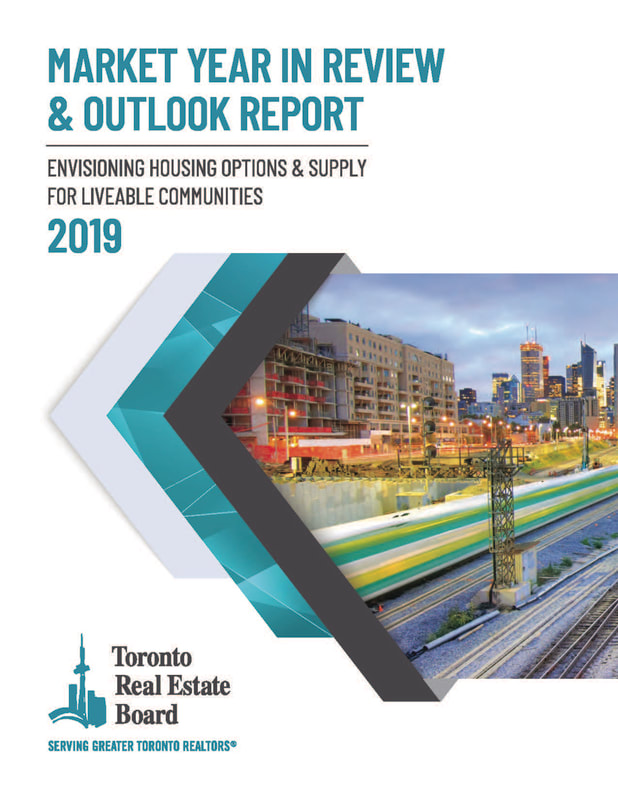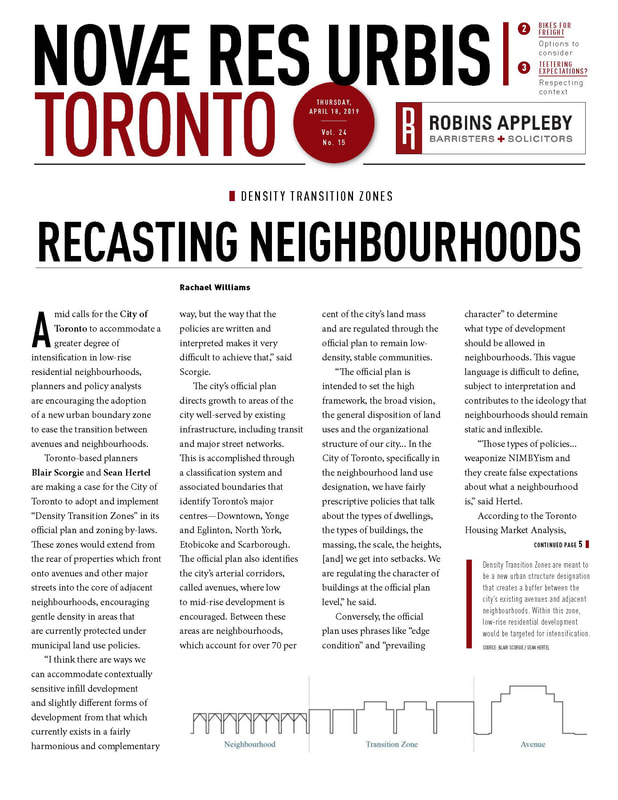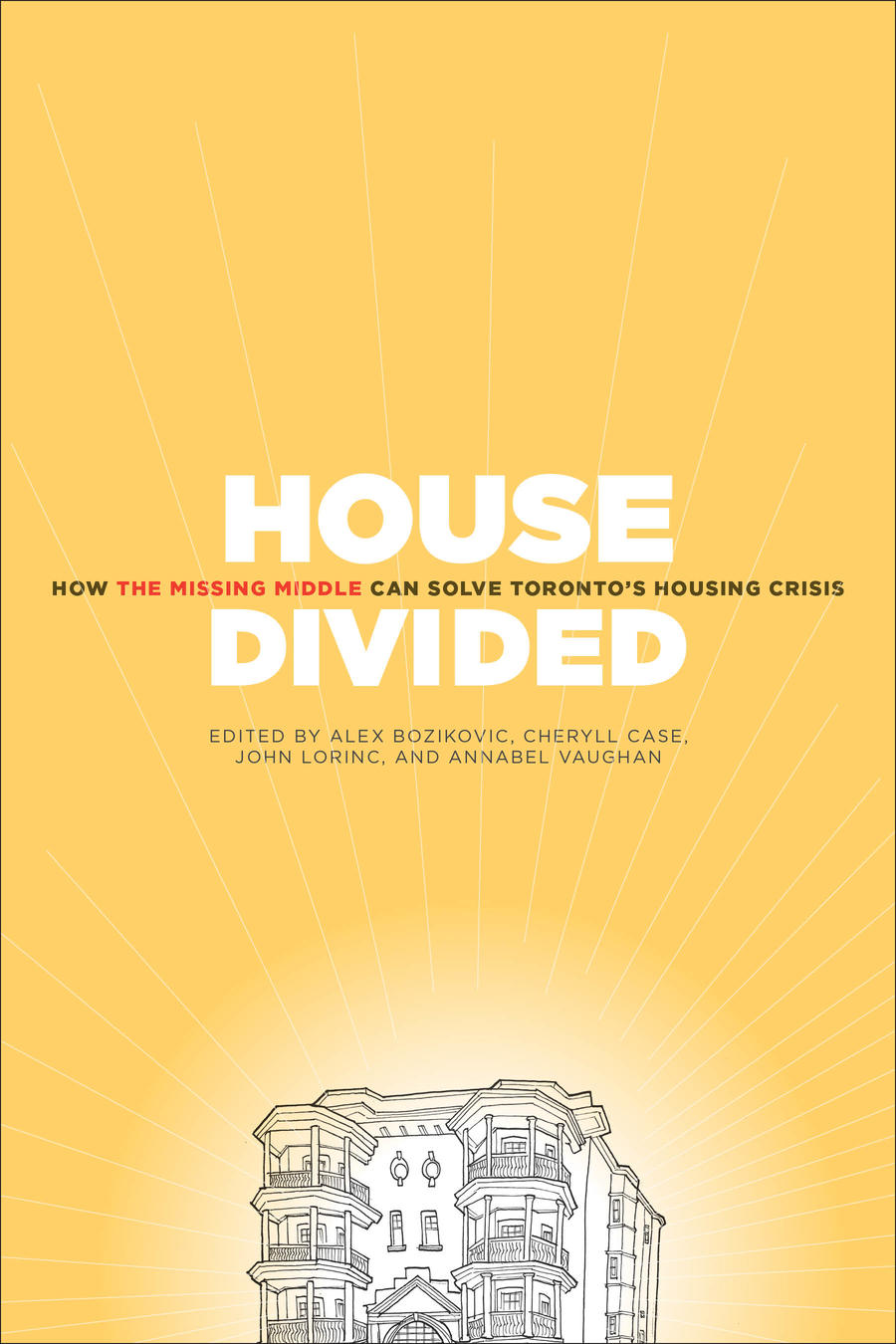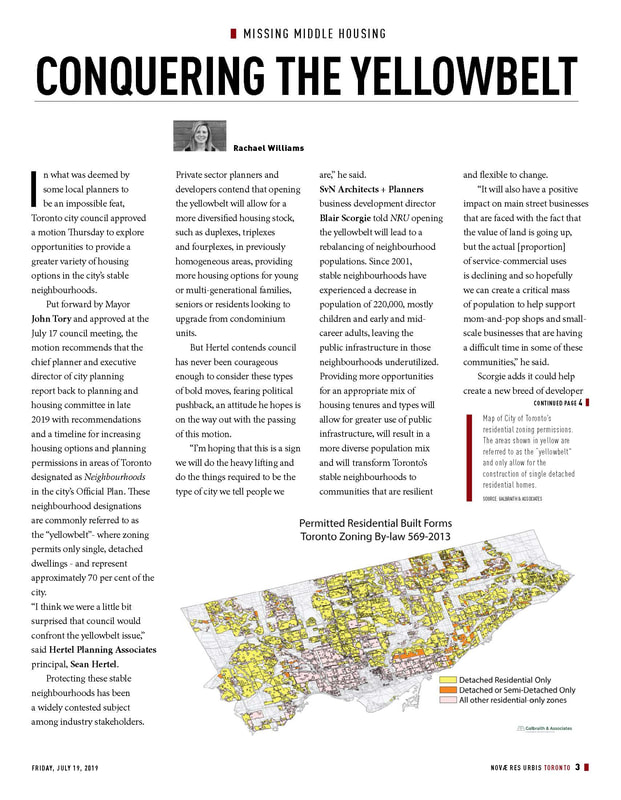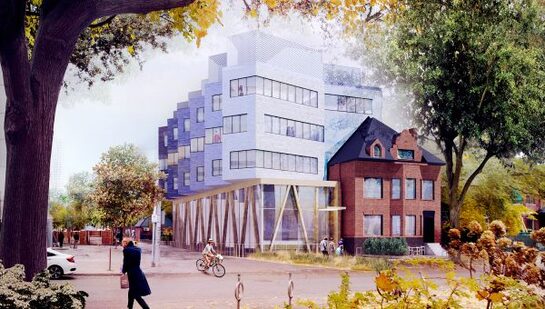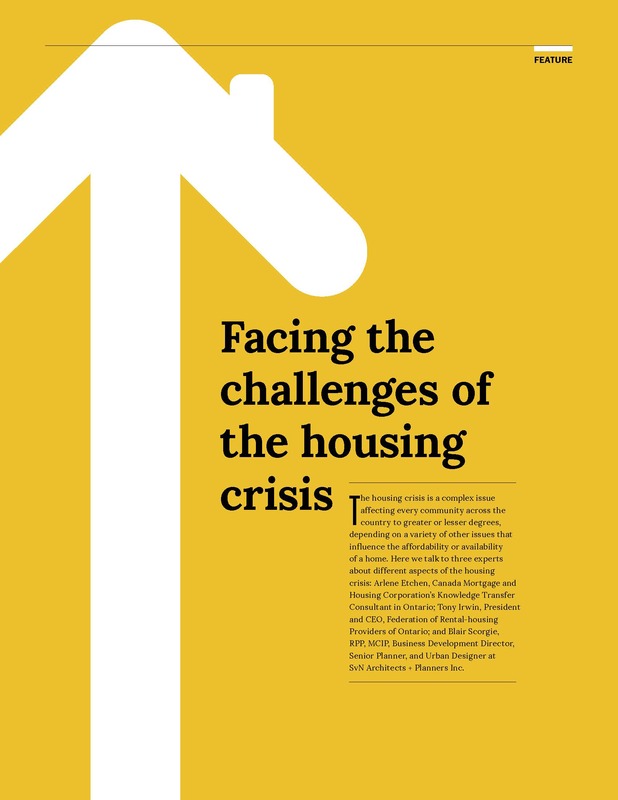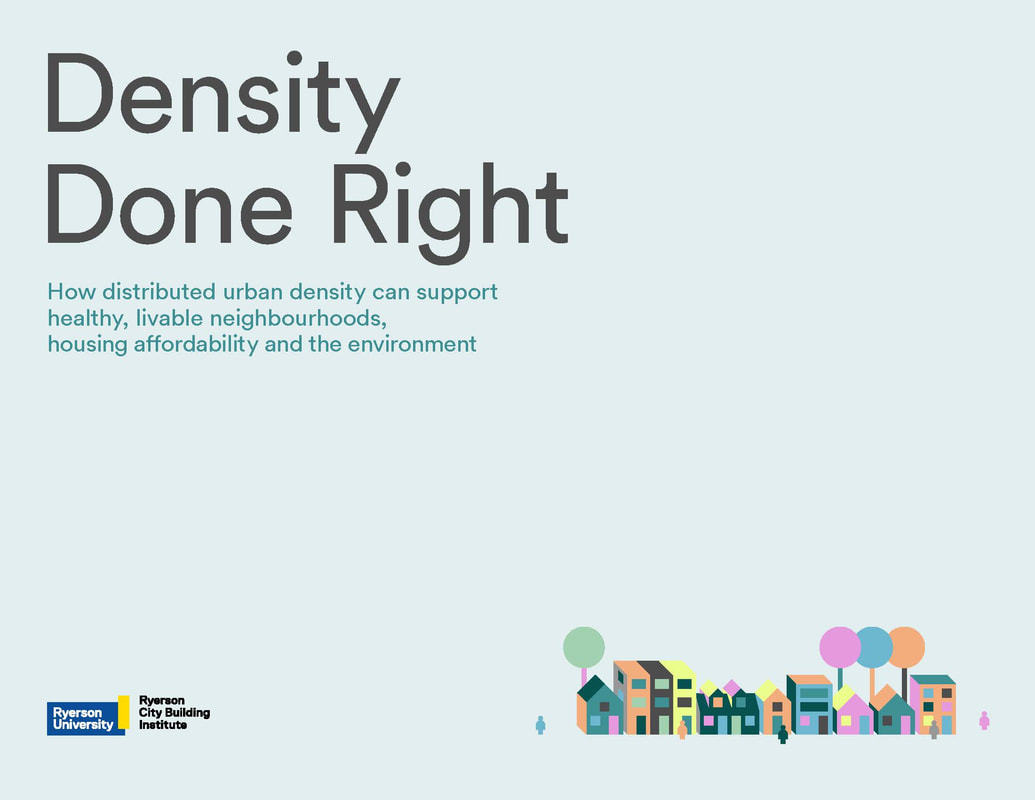The Missing Middle in Toronto's Housing Debate
The Globe and Mail, October 2018
In October of 2018, Blair Scorgie and Sean Hertel spoke with The Globe and Mail's Alex Bozikovic on the need to increase housing supply, affordability and diversity throughout Toronto's Neighbourhoods. The article addresses concerns over the steralization of growth across much of the City, and identifies the social and economic consequences of inaction. The article highlights the need for Toronto to begin re-thinking its approach to municipal land use policies and regulations, and introduces the concept of Transition Zones as one part of a broader solution to addressing the housing crisis.
External Links: Full Article
External Links: Full Article
A Strategy for Significantly Increasing the Supply of "Missing Middle" Housing in the City of Toronto
Centre for Urban Research and Land Development, February 2019
The Toronto Real Estate Board commissioned the Centre for Urban Research and Land Development at Ryerson University to study how best to expand the supply of what is now called "missing middle" housing throughout the City of Toronto. The report, which serves as the result of this research, explores the role of "missing middle" housing in the Toronto market (both past and present), and the reasons for the limited production of new "missing middle" housing units relative to demand. Furthermore, it provides recommendations for significantly increasing the supply of these types of housing units.
|
Firstly, the report identifies the need to ultimately broaden the type of housing permitted in all Neighbourhoods to include townhouses, stacked townhouses, duplexes, triplexes, fourplexes and other low-rise style homes. It goes on to state that this process could be implemented in stages, and that the introduction of Transition Zones, on the edges of Neighbourhoods, should be considered.
Secondly, the report identifies the need to facilitate the production of "missing middle" housing units along the portions of the Avenues, where and when these housing forms are economically feasible. In doing so, the report identifies ways to strengthen the financial feasibility of development sites along Avenues and other major streets, which are some distance away from the Downtown. It goes on to state that a key contribution municipal planners could make in this regard is to pre-zoning lands along both sides of the Avenues and other major streets for the development of "missing middle" housing, and to create Transition Zones between the Avenues and adjacent Neighbourhoods. Finally, the report identifies the need to provide "missing middle" housing units through the densification of Toronto's Neighbourhoods. In doing so, it cites the research and recommendations of Blair Scorgie and Sean Hertel, and specifically identifies Transition Zones as a method for densifying the edges of Neighbourhoods, by extending opportunities for low-rise intensification from the Avenues and other major streets a specified distance (e.g. 100 - 200 metres) in to the core of adjacent Neighbourhoods. External Links: Full Report | Presentation |
Market Year in Review and Outlook Report: Envisioning Housing Options and Supply for Liveable Communities
|
Transition Zones: Recasting Neighbourhoods
|
House Divided: How the Missing Middle will Solve Toronto's Housing Crisis
|
Conquering the Yellowbelt
|
The Missing Middle and the Case for Transition Zones
|
Facing the Challenges of the Housing Crisis
|
Density Done Right
|

